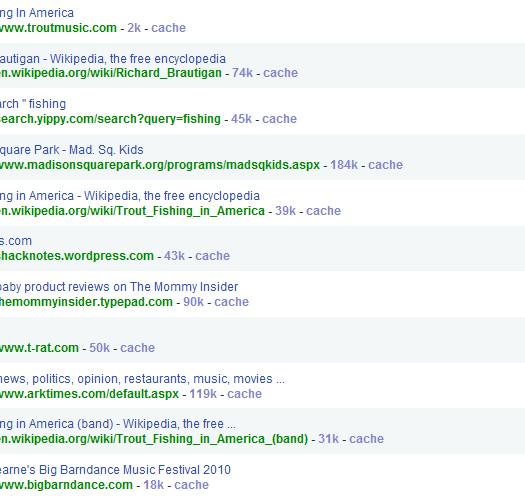Your cart is currently empty!

Natural Link Profiles
One of the things you should do when linkbuilding is to check out your competitors’ link profiles. Use a software tool for the purpose, or a free tool such as Yahoo! Site Explorer, and have a look at the sites that link to your competitor.
Sometimes you can find good places to request links in this way; I find that a nice email saying, “I notice that you’ve listed most of the main sites offering X, but not MySite,com…” along with data substantiating the value of the site, often works very well.
Even if you don’t find good new places to request links, you can often get a good idea of the strategy your competitor is using. Are they going with articles and press releases? Are they paying for ads? Is there a lot of social media going on? Armed with this information and what you know about your field and your competitors, you can either draw conclusions about what works well for your industry, or see where you can blaze new trails with things not already being done.
What you don’t often see is an actual good natural link profile.
Ideally, all sites would just get their links naturally from being valuable. In reality, that’s a slow process. Most good sites do some work on linkbuilding, so the savvy observer can see a strategy, and most sites that don’t work on linkbuilding aren’t that good, so they just have a handful of natural links.
We’re currently talking with an organization that has a good natural link profile. Their site has some big problems with SEO, so that they have just a couple thousand links after a decade or so online. But look at those links! They have links from several different Wikipedia articles. They have links from newspaper and magazine articles. They have links from influential bloggers. They have links from reviews, news aggregates, and other people’s social media.
We all want link profiles like these. How can you achieve this? Simple! Have your site up for a long time and be rather famous. Hard to copy.
Our lab site, www.myfreshplans.com, is gaining a nice natural link profile, because we just placed half a dozen high value links and then left it alone. We wanted to see what would happen.
Here’s what has happened in five months: 713 links, about 40% to inner pages. We’ve worked with sites that have been up for years without reaching 713 links, so we feel that this is not bad, but it’s certainly fewer than we could have attained with steady linkbuilding.
Looking at a few of the links to one of the inside pages (called “deep links”), we see that other education-oriented sites are linking to us. We also have links from blogs (including our own), from one blog directory, from social media, and from schools.
These natural link profiles don’t, you’ll notice, include lots of links from directories, ads, or press releases. There’s nothing wrong with those easy links — both these sites would benefit from that type of basic linkbuilding — but search engines can certainly tell the difference. The more natural your link profile appears, the better.
When we’re ready to build links intentionally for FreshPlans, we should look at this data, and at the referring sites that send traffic (we can find that at our Google Analytics account), and find similar sites to the ones that have naturally given us links, and the ones that have given us traffic. We should request links from that kind of site. If we didn’t have a natural link profile of our own to work with, we ought to scour our competitors’ link profiles seeking these natural links or the cultured pearls of links and try for those.
by
Tags:



Leave a Reply